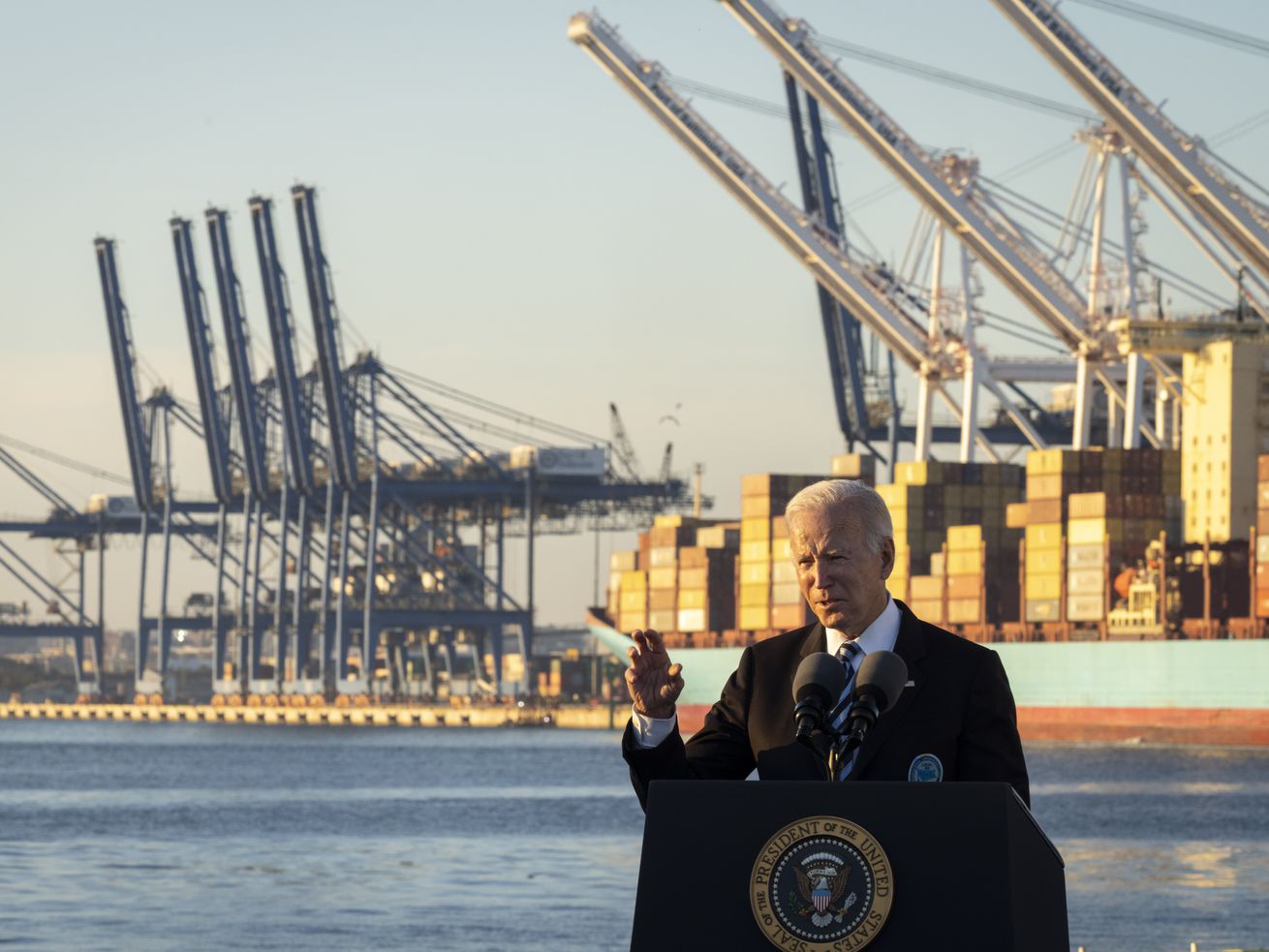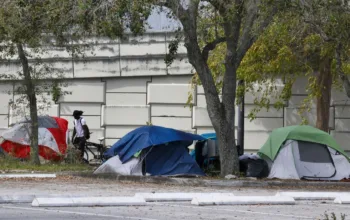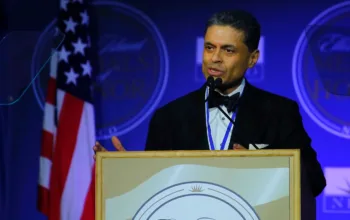They’ll have significant discretion over how much of the funding will be spent.
Now that President Joe Biden has signed the Infrastructure Investment and Jobs Act (also known as the bipartisan infrastructure framework, or BIF) into law, the federal government faces a new challenge: getting the funds out to states and cities.
In the coming months — and years — federal agencies will distribute billions of dollars for everything from bridge repairs to public transit expansions to bike paths. Most of this money will go directly to state governments, which will have significant discretion over which projects they’d like to fund.
The state officials who oversee most civilian infrastructure projects will soon face tough decisions about which communities will get this money. Because the bill doesn’t include enough funding to cover the entirety of the country’s infrastructure needs, states and other regional entities will have to decide which roads get repaired, which lead pipes get replaced, and which bridges get restored, a process that has in the past left certain low-income communities and communities of color with poor access to adequate infrastructure.
Communities will begin receiving infrastructure funding in the course of the next year. Many programs that are being funded, like the Drinking Water State Revolving Fund or the Highway Safety Improvement Program, already exist, so officials can use established channels to distribute the money. Other initiatives, however, like a program to establish a national network of electric vehicle chargers, are newer and could take a year, or more, to set up.
While much of the bill’s funding will be distributed to states, the legislation also includes a substantial amount of money (at least $120 billion, according to the Wall Street Journal) that’s under the jurisdiction of the federal government, which doesn’t typically have much authority over infrastructure projects. Part of this funding will be doled out through competitive grants, giving officials at federal agencies more of a voice in the decisions.
So far, the Department of Transportation has estimated that states could receive funding in as soon as six months. This timing, though, will vary significantly depending on the program.
Beyond the timing and logistics of distributing the money, federal and state officials are also expected to face a major challenge in making sure this new funding addresses racial inequities. Past infrastructure measures have failed to tackle this issue, and have, at times exacerbated existing problems. Because the states will control most of the funding, they’ll be the ones largely determining how to acknowledge these disparities, if at all.
“Not only will states have discretion over revolving funds and highway dollars, but there’s a big question of what they choose to fund,” says Adie Tomer, a senior metropolitan policy fellow at the Brookings Institution.
States will have a lot of discretion on what projects are funded
The specifics of how any individual project is funded will vary significantly depending on the type of initiative — whether it is public transit or drinking water or roads — however, the distribution of money will broadly work in the same way.
First, the money laid out in the legislation will be allocated to specific federal agencies that work on different policy areas, giving them the authority to distribute this money. The Department of Transportation has jurisdiction over the bulk of the funds and will oversee money for highways, public transit, and rail. The Environmental Protection Agency will oversee funding for drinking water and wastewater projects, including the replacement of lead pipes. The Department of Commerce will oversee funding for broadband deployment. The Department of Energy will oversee funding for the electric grid and clean energy investments. And the Department of Interior will oversee water management and natural disaster resilience.
Then, these agencies will send most of this money to state governments in the form of grants or loans over the next five years.
The funding distributed to states will be based predominately on formulas that the federal government has already calculated. These formulas attempt to take into account the individual needs and conditions in a given area in a standardized way.
Each year, the federal government allocates money for things like road repairs, wastewater projects, and rail updates. That money is determined for each state based on different characteristics including the number of people who live there as well as the infrastructure that’s present: If, say, a state has denser public transit networks already, it might get more funding on that front.
Take, for example, the funding for clean drinking water: How much money a given state gets for water infrastructure is determined using a formula with a few key variables including the results of a Drinking Water Infrastructure Needs Survey and Assessment conducted by the EPA. That survey synthesizes data from water utilities, state water employees, and EPA experts to put a dollar value on states’ water sourcing, treatment, storage, and distribution needs. Using formulas such as these, the federal government tries to send the bulk of its money to places where there are both a lot of people and a lot of need.
In August, the White House estimated more populous states like California, Texas, and New York are expected to get the lion’s share of the new infrastructure funding given the way these formulas work. These states will respectively receive about $44.6 billion, $35.4 billion, and $26.9 billion each, according to a CNBC analysis.
To decide which cities and towns will receive the new federal money, states are expected to call on localities to compete for various grants and loans. To access drinking water funding, for example, cities and towns already apply to state agencies each year, and then officials decide what projects will get funding based on need.
By and large, there’s a lot of variability when it comes to how each state determines which communities do — and don’t — get this money. And that variability is expected to be seen with the new infrastructure money as well.
“The bill doesn’t overly dictate what projects to execute,” Tomer said.
In making their decisions, the states will be forced to make real tradeoffs. While the infrastructure bill is a massive investment, it’s far from enough to address the entirety of the country’s needs. State officials will be forced to make tough choices about where limited investments should go.
/cdn.vox-cdn.com/uploads/chorus_asset/file/23016820/GettyImages_1235989767.jpg) Matthew Hatcher/Bloomberg via Getty Images
Matthew Hatcher/Bloomberg via Getty ImagesFor example, the bill allocates $15 billion specifically for replacing the US’s lead pipes. It’s estimated that it would actually take at least $60 billion to actually fix all of the country’s lead pipe issues — and so communities will inevitably be left with lead in their water, despite the improvements the bill will deliver to others. Issues like broadband access and public transit repairs face similar funding shortfalls.
Funding hasn’t always been equitably distributed in the past — and that could happen again
Besides whether communities will be left behind due to a lack of available money, another major concern across these programs is whether infrastructure funding will be equitably distributed and targeted to communities that most need it.
In the past, infrastructure funds — including everything from highway investments to drinking water support — haven’t reached communities of color at the same level as predominately white communities. A 2021 review of the Drinking Water State Revolving Fund, for instance, found that states were less likely to allocate this money to more diverse communities.
As Angela Glover Blackwell and Anita Cozart wrote for the Urban Institute in 2018, past infrastructure legislation has shut out communities of color. They cite, for example, a 1956 bill that boosted funding for roads and highways focused on “investments [that] prioritized white families and suburban communities rich with jobs, good schools, playgrounds, and other resources, while leaving black inner-city families mired in poverty and disconnected from opportunity.”
Beyond pouring money into certain communities and not others, previous infrastructure investments have also actively harmed many residents. The 1956 law, which helped establish the interstate highway system, displaced many Black Americans’ homes to make way for highway construction, and established roads that divided neighborhoods.
Because states still have so much discretion over significant swaths of this money, experts note racial disparities could again arise in how money is spent — and there are limited guardrails to prevent this from happening.
“Do you think [Florida Republican Gov.] Ron DeSantis is going to prioritize racial equity in his distribution of federal infrastructure dollars?” Kevin DeGood, the head of the Center for American Progress’s infrastructure policy team, asked, in reference to comments DeSantis has made that questioned whether highways perpetuated racial disparities in the past.
The estimated $120 billion in funding overseen by the federal government will operate slightly differently than the state funds. US Transportation Secretary Pete Buttigieg has already noted that equity — including a focus on historically “underserved” communities — will be a key factor in the distribution of this money.
To access that funding, state and local governments will have to apply directly to federal agencies, which can then decide to prioritize projects that may be more in line with the Biden administration’s #Justice40 commitment. This initiative hopes to send 40 percent of federal investments to disadvantaged communities.
“Broadly speaking, the increase in competitive grants is what gives the Biden administration the ability to functionally deliver on the promises of Build Back Better,” Tomer said.
In practice, that will mean at least $48 billion in investments for disadvantaged groups. Should the initiative succeed, it could become a model for future state and federal funding programs.
Overall, however, equity and availability concerns mean that the infrastructure bill — though historic — will not be all things to all people, and will not solve every community’s challenges. And rather than usher in sweeping change, Americans will likely see incremental improvements in their roads, water, internet access, airports, and power grids over time, some of those changes beginning as soon as months from now, but others becoming reality toward the second half of the decade.
Author: Li Zhou
Read More



